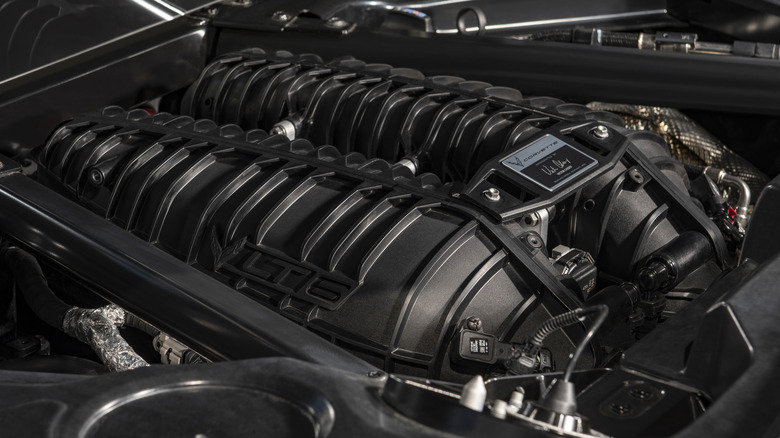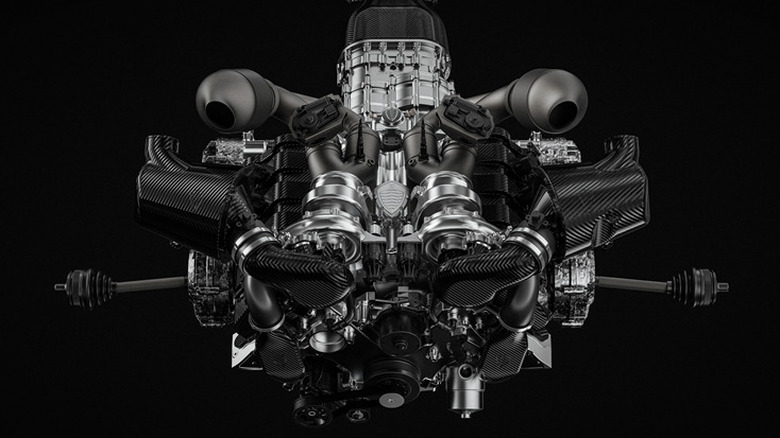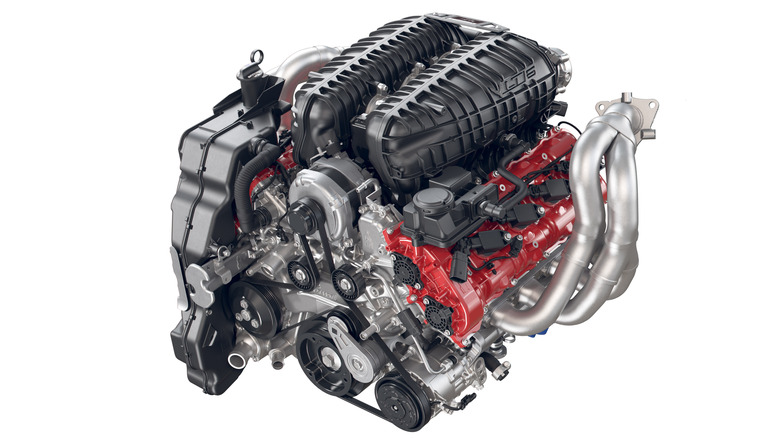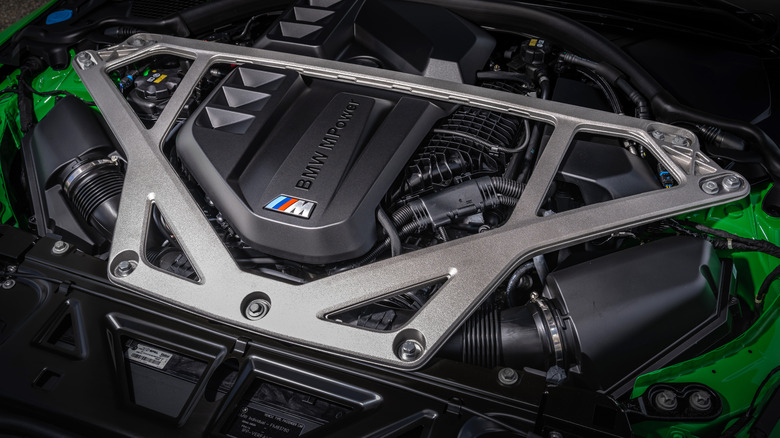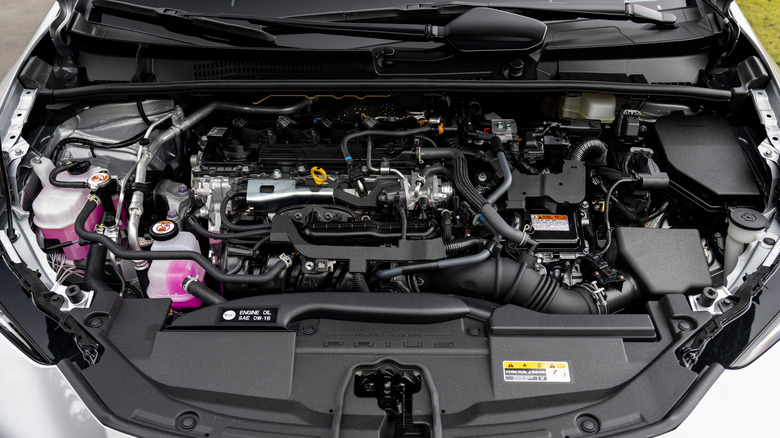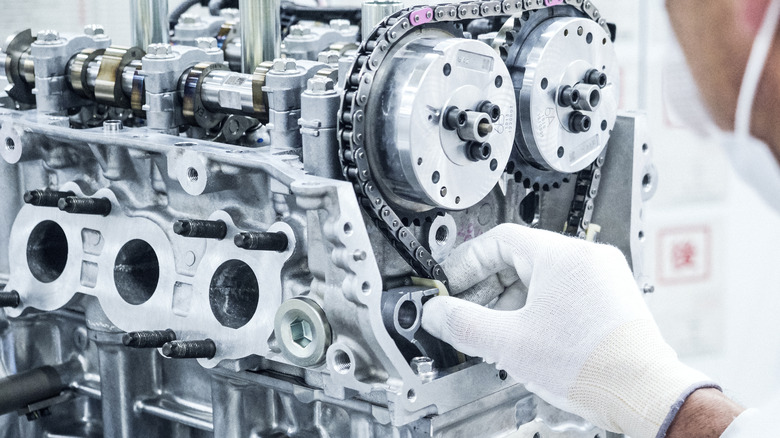5 Of The Most Impressive Engines In Production In 2024
As electric vehicles continue to make up a larger percentage of new car sales every year, it might seem like all the best engines are going extinct — especially the high-horsepower engines enthusiasts love so much. Nostalgia and pessimism may lead you to believe that the automotive industry's best internal combustion days are in the past, and that all the good engines have been swapped out for soulless EVs with ultra-silent operation — but don't be so sure.
Several impressive engines are being built today and these are being used in all sorts of vehicles. Supercars and sports cars are faster than ever. Big V8s are still putting out massive horsepower numbers and so are smaller engines, with extraordinary horsepower-per-liter numbers.
There are high-revving and high-horsepower engines out there and there are ultra-efficient engines too, with different standards for performance, but just as impressive. Which of these engines is the most dramatic? Which engines are the most efficient? And just how much horsepower is too much? These engines beg the questions.
Koenigsegg Jesko
Koenigsegg is all about breaking records. The brand set records for quickest acceleration, records as the world's fastest production car, and records for the world's most powerful production car. They set these marks with incredibly aerodynamic and extremely lightweight cars — two virtues that are undoubtedly present with one of their latest creations, the Jesko.
The 5.0-liter twin-turbo V8 powering the Jesko can run on standard high-octane pump gas or E85 fuel. With pump gas, it produces 1,280 horsepower — nearly double what the Corvette Z06 produces. Fill it with E85, though, and it makes a scarcely believable 1,600 horsepower. And Koenigsegg isn't stopping there.
In 2025, Koenigsegg has promised to begin deliveries of the Gemera — a new four-seat hybrid that will use (as an optional engine) the same V8 that powers the Jesko paired with an 800-horsepower electric motor. With the Gemera, the power figure nearly doubles over the standard Jesko to an eye-watering 2,300 horsepower. Many production vehicles make do with just 10% of that power — so the Gemera, like the Jesko it will share an engine with, promises to be remarkable.
Chevrolet Corvette Z06
Under the hood of the standard C8 (8th generation) Corvette there's a 6.2-liter V8 that puts out 490 horsepower and 460 lb-ft of torque (495 horsepower and 470 lb-ft with the performance exhaust). That engine, known as the LT2, is impressive enough, but Chevy turned things up a notch for the Z06. The Z06 is typically a step above the standard Corvette, but it's below ultra-high-performance versions like the ZR1 (there's no ZR1 for the current eighth-generation Corvette, but Chevy will likely announce one eventually).
The Z06 uses an entirely different engine than the standard Corvette, the LT6. The LT6 is also a V8 but smaller than the LT2, with just 5.5 liters of displacement. Despite its smaller size, the LT6 is much more powerful — it's even more powerful than the previous-generation C7 Z06's supercharged V8.
The old C7 Z06 used a supercharged 6.2-liter V8 that produced 650 horsepower, while the current LT6 puts out 670 horsepower without using turbochargers or superchargers, making it one of the most powerful naturally aspirated engines ever made. The standard C8 Corvette's LT2 V8 reaches peak power at 6,450 RPM, while the Z06's flat-plane-crank LT6 revs much higher, producing peak power at an astonishingly high 8,400 RPM.
BMW M3 CS
The BMW M3 has been one of the top luxury driver's cars for decades. Enthusiasts will argue over which engine and which model year is best, but few cars are as sought after for their excellent combination of performance and prestige. The newest BMW M3, the 2024 M3 CS, is no exception.
The M3 is available in three trims, all of which use the same twin-turbocharged 3.0-liter inline-six engine. The base M3 produces 473 horsepower and 406 lb-ft of torque while the mid-level Competition model makes 503 horsepower and 479 lb-ft of torque. Still need more juice? That's where the CS comes in.
The M3 CS produces an impressive 543 horsepower (and the same 479 lb-ft of torque as the Competition model). According to BMW, that's enough power to take the M3 CS from zero to 60 mph in just 3.2 seconds. Outlets like Car and Driver, however, were able to make the sprint to 60 mph in an astonishingly quick 2.7 seconds.
Toyota Prius
An engine doesn't have to be a tower of power to be impressive. Sometimes, it's quite the opposite. At least that's the case with the 2024 Toyota Prius, which has a 2.0-liter four-cylinder engine — tiny by Corvette or Jesko standards. The Prius' four-cylinder engine puts out just 150 horsepower on its own, with the hybrid system netting just 196 horsepower (on all-wheel-drive models). The Prius' party trick, however, is its efficiency.
Front-wheel drive Prius models are rated as high as 57 mpg combined by the EPA, making it the most fuel-efficient car you can buy in 2024. All-wheel drive models get the lowest EPA rating in the Prius lineup, but 49 mpg combined is still a seriously impressive number. The Prius has been the choice of cab drivers and frugal commuters for years, but when it was redesigned in 2023, it became much sleeker and significantly more stylish, complimenting its continued efficiency. Thankfully, that means drivers no longer have to choose between something that looks good and something that saves quite a bit at the pump.
Toyota GR Corolla
While the Toyota Prius' engine is impressive because it squeezes out every last mile per gallon, the Toyota GR Corolla has a different talent. The 2024 GR Corolla has a tiny 1.6-liter three-cylinder engine, so it has even fewer cylinders than the efficiency king, but the Corolla has an astonishing horsepower-per-liter number of 187.5.
For those who don't have a calculator handy, that's 300 horsepower from a three-cylinder engine. To put that into perspective, the Z06 produces 121.8 horsepower per liter or 83.7 horsepower per cylinder. That's 65.7 horsepower per liter and 16.3 horsepower per cylinder less than the GR Corolla.
The GR Corolla gets those big numbers from its punchy three-cylinder via a turbocharger, with a maximum boost pressure of 25.2 psi — a very high number for any production vehicle, especially one that starts its life as a basic hatchback like the Corolla. And, despite being relatively high-strung, the GR Corolla still gets an EPA estimate of 28 mpg highway — impressive for a performance vehicle of any size.
